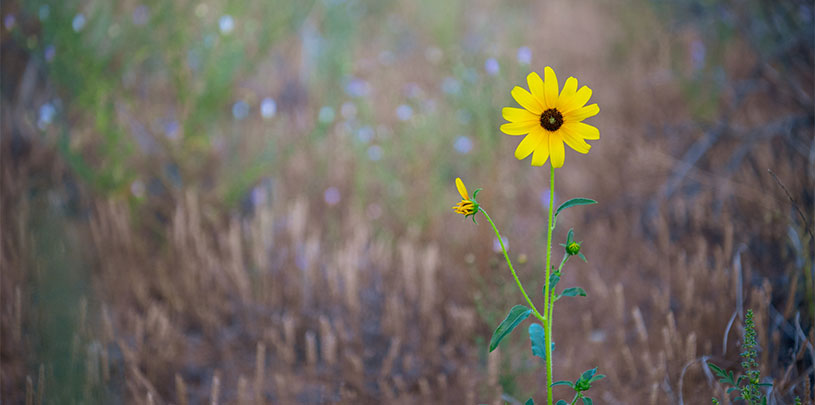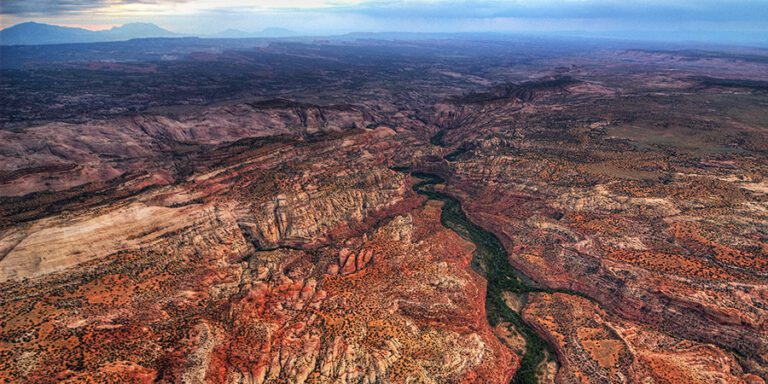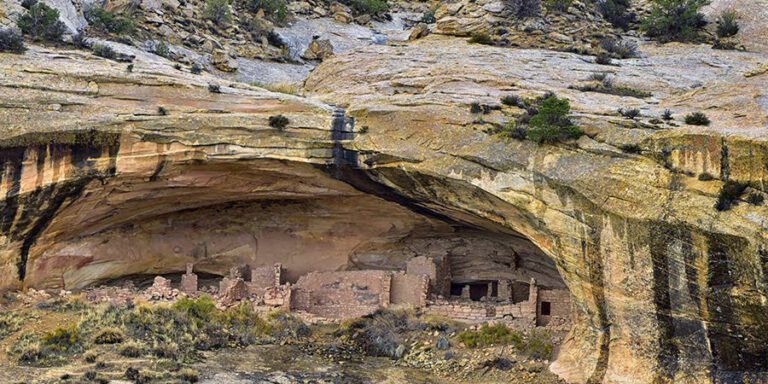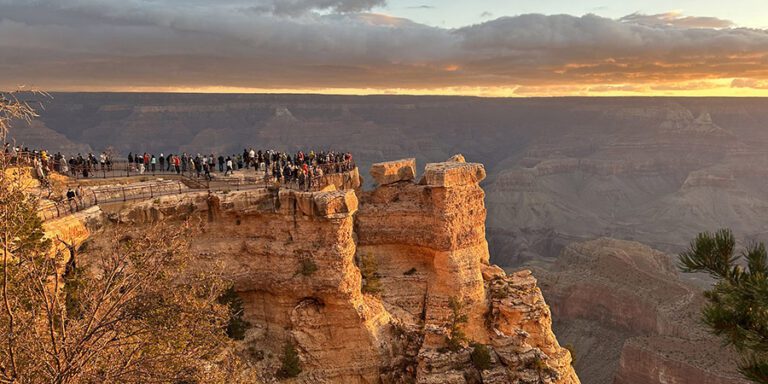
Grand Staircase-Escalante National Monument bursts into bloom each spring. See some of our favorite desert wildflowers.
Grand Staircase-Escalante National Monument in southern Utah protects an incredible diversity of plants. Elevations in the monument range from about 3,800 feet to over 8,600 feet and span deep canyons, dusty benches, and high plateaus. Add in the Escalante River and its meandering tributaries and you have an incredible variety of habitats for plants to grow. Scientists have recorded over a thousand different plant species in the monument, the majority of which are wildflowers.
Come spring, the desert explodes with blooms in every hue — orange globemallows, crimson penstemons, fuchsia prickly pear flowers, white asters, purple lupines, yellow snakeweed, and more. After especially wet winters, moisture brings hardy desert-dwelling seeds back to life in “superbloom” events. Chase blooms up in elevation as the snow melts, stop and smell the cliffroses, but please don’t pick any of these beauties.
Here are a few of our favorite wildflowers:
Rocky Mountain beeplant

Pollinators, especially bees, love to buzz around the Rocky Mountain beeplant. Its stalks grow up to 6 feet tall and burst into purple blooms from May to October. The plant is prolific across the Colorado Plateau and Grand Staircase-Escalante National Monument. You might spot it growing in sunny sagebrush meadows and pinyon and juniper forests.
Showy milkweed
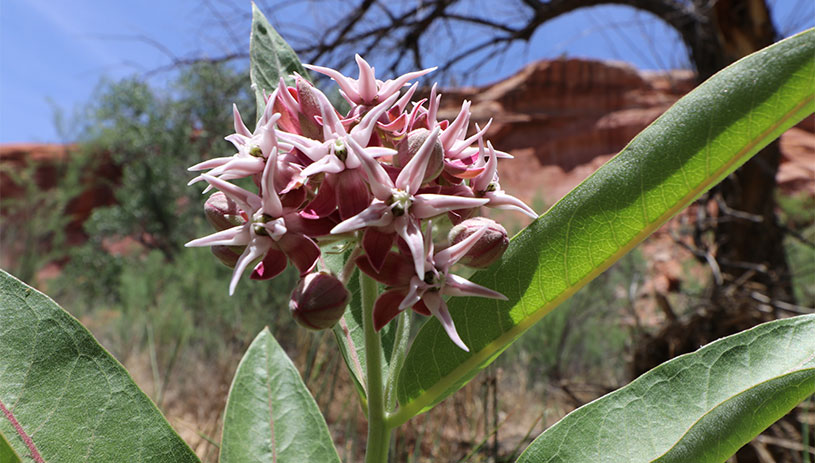
Showy milkweed boasts fragrant star-shaped flowers atop 5-foot stalks with fuzzy, long, oval leaves. The plant attracts insects and butterflies — most notably monarch butterflies. In fact, monarch caterpillars likely don’t taste very good because they munch toxic milkweed sap. Find Grand Staircase-Escalante painted in these light pink blooms from May to September.
Monkey flower
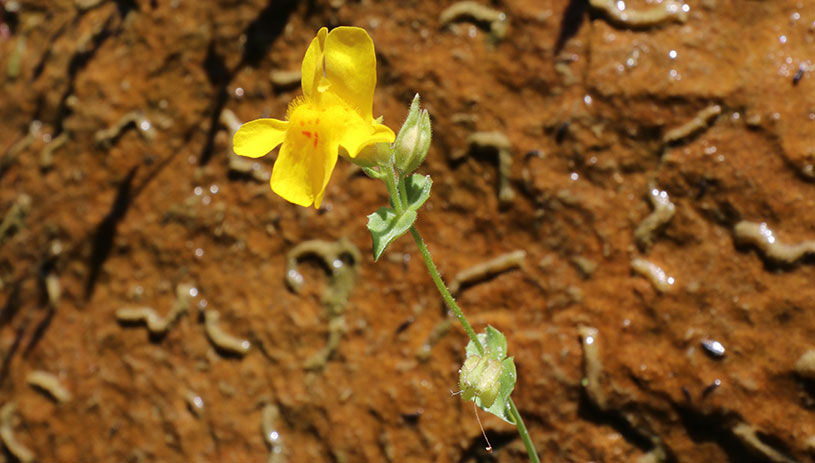
Monkey flowers love water, and while much of Grand Staircase-Escalante is dry, they flourish near seeps and springs — oases that nourish life in canyon bottoms. Along with these delicate tubular yellow flowers, look for orchids, columbines, cottonwoods, and willows in places like Calf Creek Falls or along the Escalante River and its tributaries.
Hoary townsend daisy
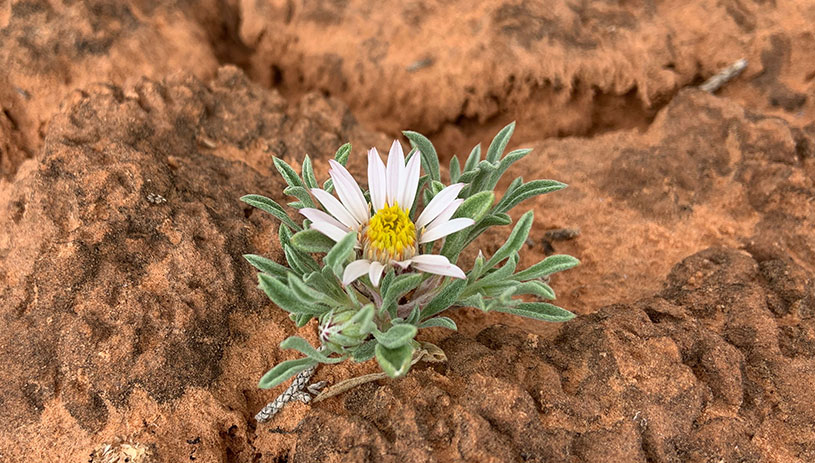
A little daisy that blooms all summer long, the hoary townsend daisy hugs the ground in sandy soils. It has a short stem, narrow silvery-green leaves, and small white flowers that are about 1 inch across. Each flower has between eight and 32 petals.
Golden mariposa lily
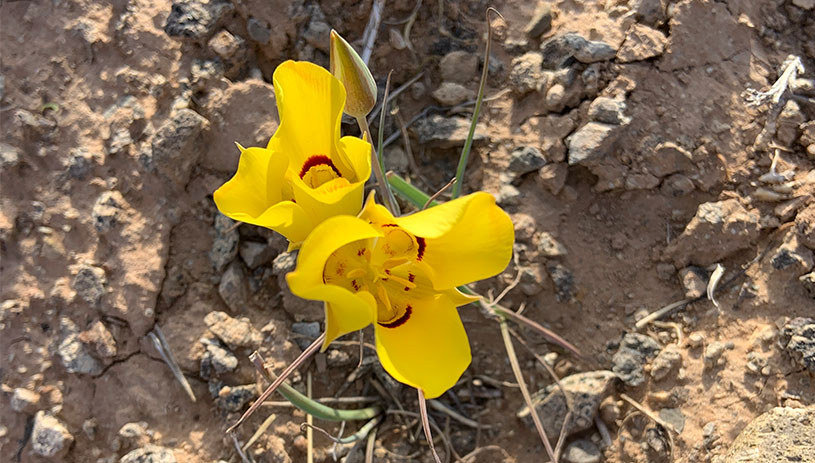
The golden mariposa lily is a stunner, with long and narrow grass-like leaves on a single stem topped by a yellow cup-shaped flower. Each of its three petals has a dark red crescent near its base. Find the flower in sandy soils across the monument. Its blooms are prevalent in May and June.
Small-flowered fishhook cactus
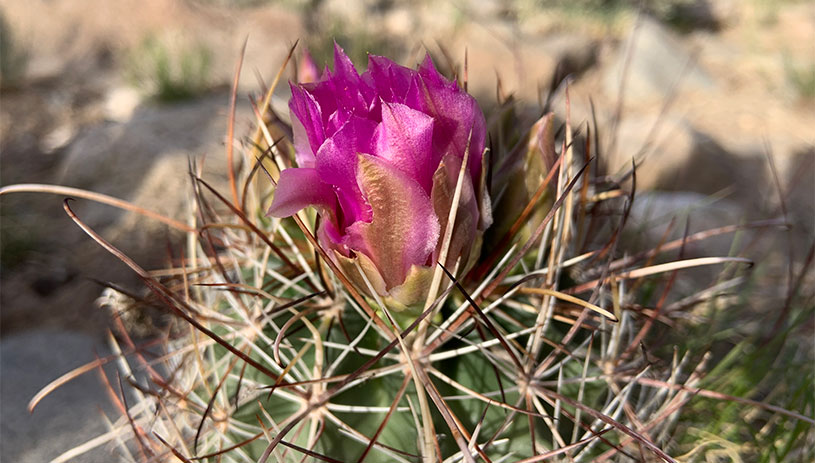
True to its name, this fishhook cactus has long hooked spines and grows up to 10 inches tall. Spot the cluster of magenta blooms atop this stubby cactus in the high desert in April and May.
Prairie spiderwort

The prairie spiderwort reaches 1 to 3 feet tall, with a cluster of long and narrow leaves shooting up from the base of the plant. Blue-violet flowers perch on top. Count yourself lucky if you see a prairie spiderwort in bloom — these flowers only last a day! Find the plant in hot, sandy grasslands.
Sego lily

Another delicate bloom, the sego lily consists of a single slender stem, growing about 10 inches tall, with a creamy white flower and a yellow center. The sego lily is the state flower of Utah. Find the flower blooming in early summer in open shrublands and ponderosa pine stands on high mesa tops.
The wildflowers, grasses, trees, shrubs, and other plants in Grand Staircase-Escalante host an array of wildlife. Coyote chase desert cottontail through the rabbitbrush, yellow-rumped warblers call from the willows, and more than 660 species of bees buzz from plant to plant. Whether you take a scenic drive, or experience Grand Staircase-Escalante on foot, you’re sure to find this desert landscape teeming with life.

